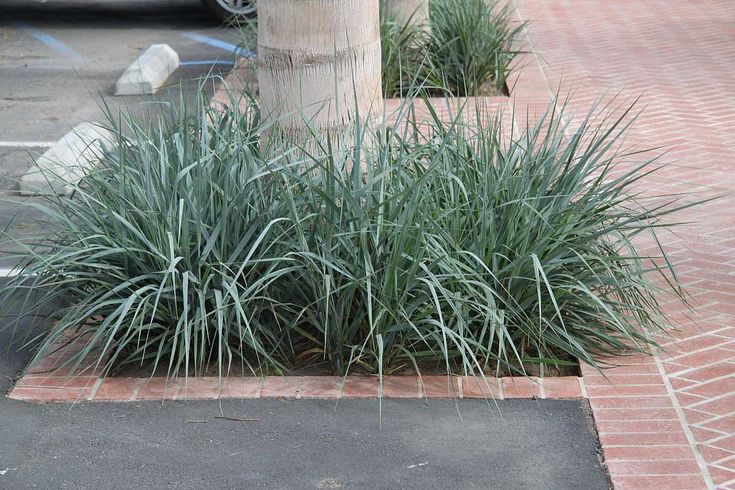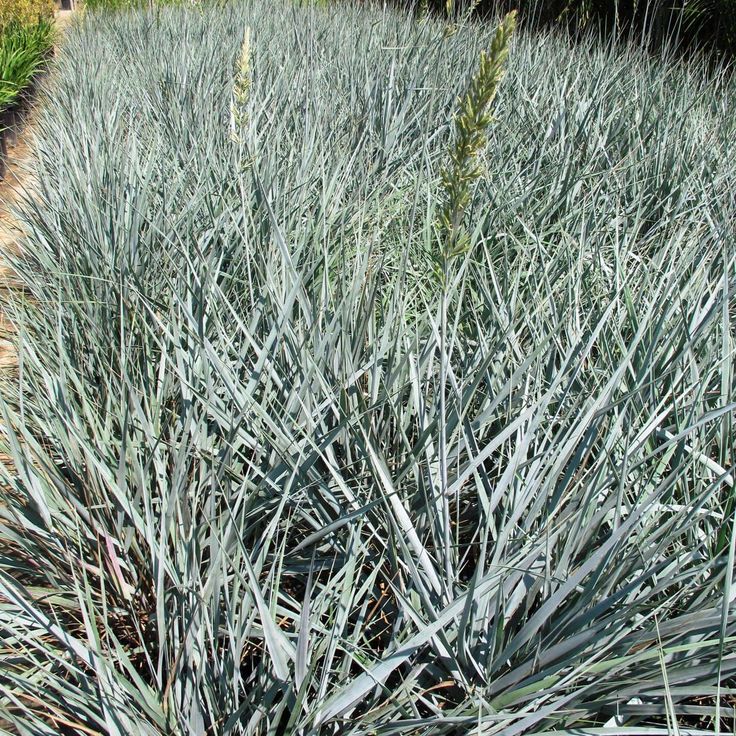Leymus condensatus 'Canyon Prince'

Leymus condensatus 'Canyon Prince', commonly known as Canyon Prince wild rye, stands as a robust and visually striking grass species native to the coastal regions of California and the Pacific Northwest.
Renowned for its ornamental appeal, erosion control capabilities, and ecological contributions, this cultivar of the giant wild rye species adds both beauty and functionality to coastal landscapes.
In this detailed article, we will explore the facets of Leymus condensatus 'Canyon Prince', its botanical description and care requirements.
Botanical Description
Leymus condensatus 'Canyon Prince' is a perennial grass characterized by its large, arching foliage and striking blue-gray coloration.
The foliage forms dense clumps or tussocks, with individual leaves reaching lengths of up to 3 feet (1 meter) and widths of 0.5 inches (1.3 cm).
The blades are rigid and upright, with a distinct bluish-gray hue that adds visual interest to the landscape.
From late spring to early summer, 'Canyon Prince' can produce tall flower stems topped with spikes of feathery flowers.
Habitat and Distribution
Leymus condensatus 'Canyon Prince' is native to coastal regions of California, Oregon, and Washington, where it is found in a variety of habitats, including coastal bluffs, dunes, and grasslands.
It thrives in well-drained, sandy soils and is tolerant of salt spray, wind, and drought conditions.
Is particularly well-suited for planting in coastal gardens, erosion control projects, and habitat restoration efforts, where it helps to stabilize soils and prevent erosion while enhancing the aesthetic appeal of the landscape.
Life Cycle and Phenology
As a perennial grass, Leymus condensatus 'Canyon Prince' has a relatively long life cycle with gradual growth and reproduction.
It typically begins growing in late winter to early spring, with new shoots emerging from the base of the plant.
Flowering occurs in late spring to early summer, when tall flower stalks rise above the foliage, bearing clusters of small, inconspicuous flowers.
In this way, the wind, when pollinating the flowers, produces small, dry seeds that are dispersed by the wind. These seeds help colonize new areas and establish populations of 'Canyon Prince' grass.
Conservation and Threats
While Leymus condensatus 'Canyon Prince' is not currently listed as threatened or endangered, habitat loss and degradation pose significant threats to populations of the species.
Urbanization, agriculture, and invasive species encroachment all contribute to the decline of coastal habitats where 'Canyon Prince' grass is found.

Caring for Leymus condensatus 'Canyon Prince'
Sunlight
Plant Leymus condensatus 'Canyon Prince' in a location that receives full sunlight to partial shade.
So keep in mind that it tolerates some shade, but will produce more vigorous growth and denser foliage in full sun.
Watering
'Canyon Prince' grass prefers moist to dry soils and should be watered regularly, especially during dry periods. Avoid overwatering, as this can lead to root rot and other issues.
Soil
This plant prefers well-drained, sandy soils with a neutral to slightly acidic pH.
Thus, amend heavy clay or compacted soil with organic matter such as compost to improve drainage and fertility.
Mulching
For this plant apply a layer of organic mulch, such as shredded bark or wood chips, around the base of the plant.
This to help retain soil moisture and suppress weed growth.
Keep the mulch pulled back several inches from the stems to prevent rot.
Pruning
This plant requires minimal pruning.
Remove any dead or damaged foliage as needed to maintain the plant's appearance and health.
By following these care guidelines, you can cultivate healthy and vibrant Leymus condensatus 'Canyon Prince' plants in your garden or coastal landscape, contributing to the conservation of these important ecosystems while enjoying the beauty and resilience of this native grass species.
Leave a Reply
You must be logged in to post a comment.